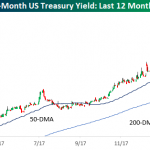At the end of August, the US Energy Information Administration reported that it had been overstating domestic demand for oil and energy products to a considerable degree. Using imprecise and lagging data, the calculations for the amount of product being exported overseas was understated by an average of 16%. That meant more output was being used elsewhere, thus less product being used here. While that is positive for US producers being able to ship wherever they can, it was a more savage reflection on the economy especially this year.
In other words, nothing terribly surprising in oil unless you are expecting dramatic improvement for the US economy through something like a “full employment” liftoff. Instead, viewing oil as a primary intersection between finance and economy, the “rising dollar” part of the eurodollar decay unsurprisingly remains as an ongoing process – not a cycle to be moved into and then quickly out of. All the same mechanisms that were shocking economists in late 2014 and early 2015 are still visible here in the summer of 2016. It’s not going to just go away; like oil and gas inventory, it only gets worse a little more each time in these uneven waves.
Today it was the influential International Energy Agency’s (IEA) turn to deliver more such bad news. When oil prices first crashed starting in late 2014 and really January 2015, the commentary was filled with the words “supply glut.” Particularly related to US fracking as the biggest contribution to non-OPEC growth, the intent in using those words almost exclusively was to downplay the possible negative implications of a serious commodity crash (especially what was causing it) given that such crashes are monetary by nature. At most, there would be some words expressed about economic “concerns”, but for the most, part oil prices were purported to be the victim of too much success.
A year and a half later, supply remains a problem but the focus has finally shifted toward demand, though not by choice. And it is here that the IEA’s latest forecasts have hit oil views hard. First, OECD oil inventories continue to climb, hitting a new record of 3.11 billion barrels in July even though, “refinery activities reached a summer peak, crude oil inventories refused to decline.” Now, however, refineries are starting to reject additional crude supplies, forcing the IEA to reduce its 2016 forecast for coming refinery runs to the “lowest rate in a decade.”














Leave A Comment